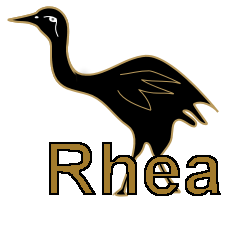| (5 intermediate revisions by one other user not shown) | |||
| Line 1: | Line 1: | ||
| − | The Z-Transform | + | [[Category:ECE438]] |
| + | [[Category:signal processing]] | ||
| + | [[Category:z-transform]] | ||
| + | [[Category:inverse z-transform]] | ||
| + | |||
| + | ===The Z-Transform=== | ||
The z-transform converts a discrete-time signal into a complex frequency domain representation. | The z-transform converts a discrete-time signal into a complex frequency domain representation. | ||
| − | * <math> X(z) = \sum_{n=-\infty}^\infty (x[n]z^{-n})</math> | + | * <math> X(z) = \sum_{n=-\infty}^\infty (x[n]z^{-n}) </math> |
Some Properties: | Some Properties: | ||
| Line 25: | Line 30: | ||
Convolution: | Convolution: | ||
| − | * x1[n]* x2[n] = X1(z)X2(z) | + | * <math> x1[n]* x2[n] = X1(z)X2(z) </math> |
| + | |||
| + | |||
| + | ===Inverse Z-Transform=== | ||
| + | |||
| + | Returns a complex variable representation back into a discrete-time signal. | ||
| + | |||
| + | * <math> x[n] = Z^{-1}[X(z)] = \int X(z)z^{n-1}\ </math> | ||
| + | |||
| + | in this case the integral is around a counter-clockwise clothed path encircling the origin of the complex plane and entirely inside the R.O.C. | ||
| + | |||
| + | ===Absolute Convergence=== | ||
| + | |||
| + | A series <math> \sum_{n=-\infty}^\infty (An) </math> is said to absolutely converge if <math> \sum_{n=-\infty}^\infty |(An)| </math> converges | ||
| + | |||
| + | For example: | ||
| + | |||
| + | <math> X(z)=\sum_{n=-\infty}^\infty x[n]z^{-n} </math> converges if the absolute value <math> |x[n]z^{-n}| < 1 </math>. | ||
| + | |||
| + | But the norm of <math> |z^{-n}| = 1 </math>, so the series converges if <math> |x[n]| < 1 </math>. | ||
| + | |||
| + | ==R.O.C.== | ||
| + | |||
| + | The R.O.C. (Region of convergence, absolute convergence in this case) is the set of points in the complex plane for which the summation of the Z-Transform converges. | ||
| + | ---- | ||
| + | [[ECE438_%28BoutinFall2009%29|Back to ECE438 Fall 2009]] | ||
Latest revision as of 05:55, 16 September 2013
The Z-Transform
The z-transform converts a discrete-time signal into a complex frequency domain representation.
- $ X(z) = \sum_{n=-\infty}^\infty (x[n]z^{-n}) $
Some Properties:
Linearity:
- $ ax1[n]+bx2[n] = aX1(z)+bX2(z) $
Time-Shifting:
- $ x[n-k] = z^{-k}X(z) $
Scaling in Z domain:
- $ a^{n}Y(z) = X(a^{-1}Z) $
Time Reversal:
- $ x[-n] = X(z^{-1}) $
Convolution:
- $ x1[n]* x2[n] = X1(z)X2(z) $
Inverse Z-Transform
Returns a complex variable representation back into a discrete-time signal.
- $ x[n] = Z^{-1}[X(z)] = \int X(z)z^{n-1}\ $
in this case the integral is around a counter-clockwise clothed path encircling the origin of the complex plane and entirely inside the R.O.C.
Absolute Convergence
A series $ \sum_{n=-\infty}^\infty (An) $ is said to absolutely converge if $ \sum_{n=-\infty}^\infty |(An)| $ converges
For example:
$ X(z)=\sum_{n=-\infty}^\infty x[n]z^{-n} $ converges if the absolute value $ |x[n]z^{-n}| < 1 $.
But the norm of $ |z^{-n}| = 1 $, so the series converges if $ |x[n]| < 1 $.
R.O.C.
The R.O.C. (Region of convergence, absolute convergence in this case) is the set of points in the complex plane for which the summation of the Z-Transform converges.

